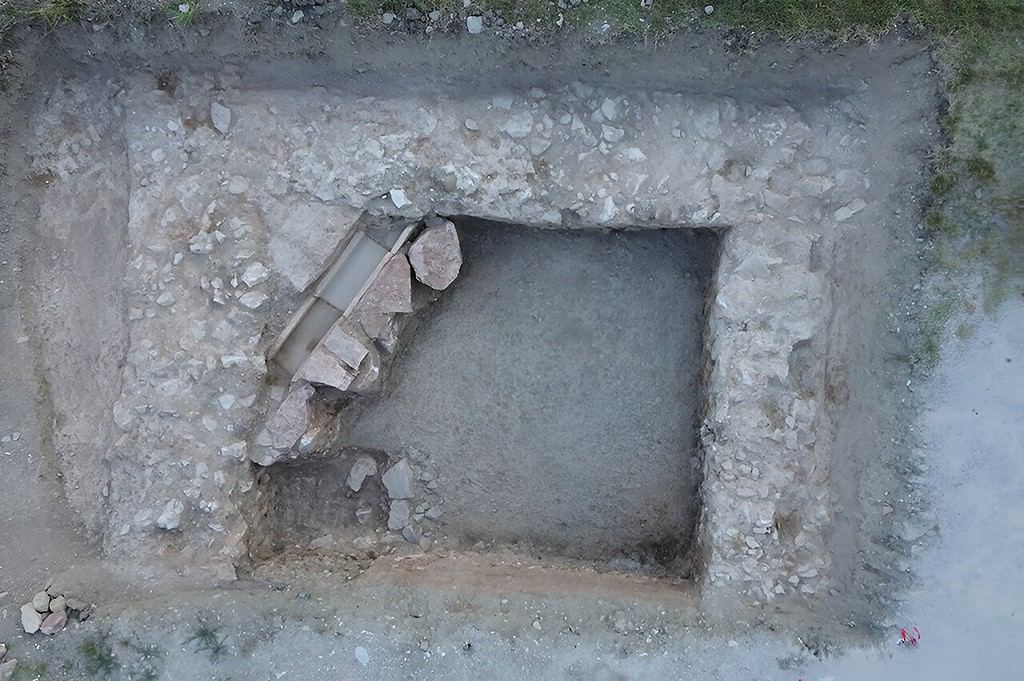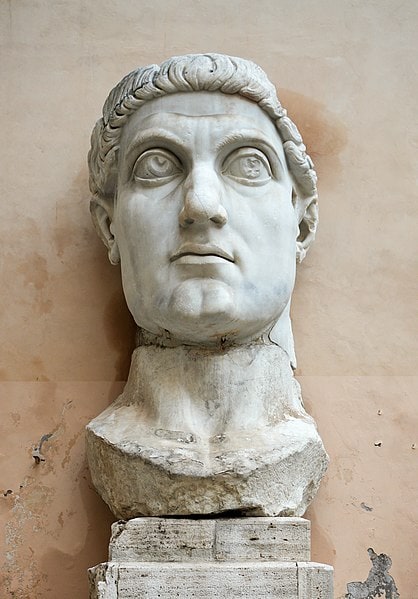
In a discovery that may reshape our understanding of a particularly important facet of Western history, archaeologists have unearthed an ancient Roman temple. This ancient monument, along with the imperial letter that led to its uncovering, provides profound insights into the Roman Empire’s transition from paganism to Christianity.
The team of archaeologists led by Douglas Boin, a history professor from Saint Louis University, uncovered “three walls of a monumental structure” in Spello, a hilltop city near Rome. This structure, dating from the era of Emperor Constantine the Great (who ruled from CE 306 to 337), symbolizes a pivotal era.
Under Constantine, Christianity flourished, transitioning from persecution to being a patronized religion in the Roman Empire. But this transition was not clear-cut or straightforward, as even Constantine himself still harbored and even encouraged pagan practices, the new research reveals.
Constantine the Great and Christianity: The Gray Area
In the early 4th century, the Roman Empire was a melting pot of religions, including an array of pagan beliefs and the steadily growing Christian faith. During these troubled times, Christianity often faced hostility and persecution, viewed as a threat to traditional Roman values and stability.
The Romans were particularly suspicious and consequently aggressive towards Christians for two main reasons. Firstly, this was a new and unknown cult. In those days, much like now, what was older was trustworthy. This explains why the Romans were much more tolerant and lenient towards Jews, even though they also particularly disliked them. However, the Jewish civilization was old and had a homeland.
The second and most important reason why the Romans adamantly persecuted Christians had to do with the latter’s defiance of Roman customs. Christians refused to worship the gods of Rome which many of the emperors claimed to be or take part in sacrifice, which was expected of those living in the Roman Empire. This transgression was seen as subversive, so Roman rulers saw Christianity as a dangerous cult that had to be crushed.
But then came Constantine.

Previously, Emperor Diocletian (who ruled from CE 284 to CE 305) had divided the empire into East and West and appointed a co-emperor or “Augustus”. Diocletian himself was an Augustus, ruling the eastern portion of the empire. Right beneath Augustus was the “Caesar”, a title given to the two junior co-emperors. Caesars were responsible for governing smaller sections of the empire and were often chosen for their abilities or familial connections to the Augusti. The Caesars were expected to eventually ascend to the rank of Augustus upon the retirement or death of their predecessors.
This four-man ruling body was known as the Tetrarchy. The idea was that each Augustus would mentor their Caesar, ensuring a smooth transition and continuity of governance. In reality, things worked a lot differently.
Constantine’s father, Flavius Constantius, was one of the Caesars of the Western Roman Empire and was later elevated to Augustus. Constantius was slain near York in 306 CE during a battle with the pics and the legions proclaimed his son Constantine as the new emperor.
However, once Diocletian died the Tetrarchy collapsed and Constantine found himself embroiled in a civil war that would determine who would bring order back to Rome.
The pivotal moment came in 312 AD at the Battle of the Milvian Bridge, a clash near Rome against his rival Maxentius. Legend, fortified by the writings of Christian historians like Lactantius and Eusebius, tells of a vision Constantine experienced the night before the battle. He reportedly saw a symbol, a cross of light, and the words “In Hoc Signo Vinces” (“In this sign, conquer”).
Heeding this vision, Constantine had his soldiers mark their shields with the Christian Chi-Rho symbol (created by superimposing the first two letters (XP) of the Greek word for Christ, ΧΡΙΣΤΟΣ). Victory followed, and Constantine attributed his triumph to the Christian God. This moment marked Constantine’s conversion to Christianity.
Following his victory, Constantine, alongside co-emperor Licinius, issued the Edict of Milan in 313 AD. This proclamation granted religious freedom throughout the empire, ending the persecution of Christians and setting a foundation for religious tolerance. It was a radical shift, as the empire transitioned from persecuting Christians to officially recognizing their faith.
Constantine actually went a step further and made efforts to promote his new faith. His reign saw a gradual favoring of Christianity over paganism. He granted privileges to Christian clergy, funded the construction of churches, and promoted Christians to high-ranking positions. One of Constantine’s most significant contributions to Christianity was his role in the First Council of Nicaea in 325 AD. He convened this gathering of Christian bishops to address the Arian controversy, which concerned the nature of Christ and his relationship with God the Father. The council led to the Nicene Creed, a foundational statement of Christian belief.
Yet, Constantine never outright banned paganism. In fact, as this new study shows, he still embraced at least some elements of the old Roman faith.
The Emperor’s letter and a monumental discovery
Boin studied a letter penned by Constantine, first unearthed in the 18th century. This letter granted the people of the town of Spello permission to celebrate a religious festival locally, rather than having to travel extensively to another festival. But it was not for free. In exchange, the townsfolk had to build a new temple dedicated to what Constantine termed his “divine ancestors.” As outlined earlier, Roman Emperors historically thought of themselves as gods in their own right and, as such, were deemed worshipable. This is known as the “Imperial Cult”.
“There was a remarkable religious continuity between the Roman world and the early Christian world,” Boin said.
“Things didn’t change overnight. Before our find, we never had a sense that there were actual physical, religious sites associated with this late ‘imperial cult practice.’ But because of the inscription and its reference to a temple, Spello offered a very tantalizing potential for a major discovery of an Imperial cult underneath a Christian ruler.”
Boin traveled to Spello and oversaw geophysical surveys that imaged the underground where researchers suspected the ruins of this temple might lie. After weeks of surveys, they finally detected a promising-looking structure beneath a parking lot. Subsequent digs revealed two adjoining walls, followed by more structures that formed the walls of the temple. The site is now the best and largest evidence of the Imperial Cult in the late Roman Empire.
This building,” Boin remarks, “shows the staying power of pagan traditions…and how Roman emperors continued to negotiate their own values and dreams for the future without erasing the past.
As Boin and his team prepare for further excavations next summer, this temple is poised to redefine our understanding of the social and cultural shifts in the late Roman Empire. It stands not just as a physical structure but as a symbol of the complex interplay between past traditions and emerging beliefs in one of history’s most transformative eras.
“We are on the cusp of giving people a very visible piece of evidence that really upends the neat and tidy ways people think about big moments of cultural change,” Boin said.
“Cultural changes are never as big as we think they are when living through them, and there’s a lot of gray area in between people’s customs and the broader society and culture. And a lot of those can be left out of the story. So to have this temple potentially be a temple dedicated to Constantine’s divine ancestors as a way to worship the emperor in an increasingly Christian world at the time, it’s so weird and I love that we can bring it to light.”
The findings were reported at the annual meeting of the Archaeological Institute of America.


